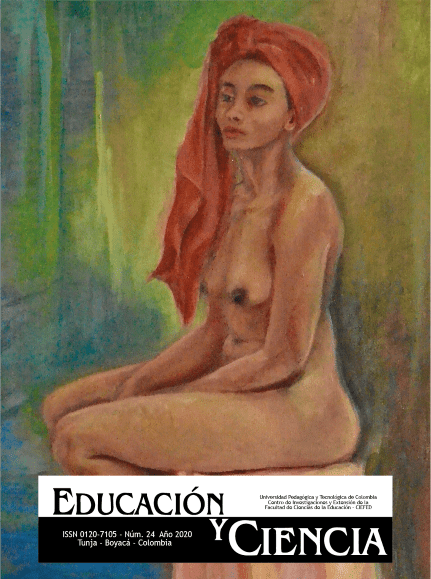Contemporary Biology Understood from Science, Technology and Innovation

Abstract
This article is based on a documentary review of some aspects related to the configuration of the living and life in the present in relation to advances in science and technology, indispensable for the impulse of vitality and productivity. The analytical lens used was the notion of counterbehavior taken from Michel Foucault’s toolbox, which makes visible what conditions make possible to activate the behaviors of the subjects in relation to the living and life, among which emerge, research as a practice of counterbehavioral thinking, transversal axis of the text that, on the one hand, allows to glimpse and reflect on some contemporary problems of biology, and the another hand, it shows that both DIYbio and biohacking propose alternative ways of approaching science and technology in order to problematize the relationships we have consolidated with the world. These questions propose other readings and ways of relating the living and life that broaden the gaze on biology and its teaching, which is fundamental to understand the contemporary issues in which we participate.
Keywords
science, technology, biology, research, teaching, technology, biology, research, teaching
References
Artemasciencia (2015). Lo animal como bioartefactual. https://19573a4f-6099-466a-a84d 5b9b5d7944d3.filesusr.com/ugd/6923ba_ba22ae5e543a4fc6ba89cbe4e33d80db.pdf
Bello, M. (s.f.). ¿Qué es VIDA? https://vida.fundaciontelefonica.com/que-es-vida/
Colciencias & CorpoGen. (2006). La biotecnología, motor de desarrollo para la Colombia de 2015.Colciencias. http://repositorio.colciencias.gov.co/handle/11146/553
Davidson, A. (2012). Elogio a la contraconducta (C. Manrique, Trad.). Revista de Estudios Sociales, (43), 152-164. https://doi.org/10.7440/res43.2012.13. (Trabajo original publicado en History of the Human Sciences, 24(4), 25-41.
El Informador (2014, 19 abril). Artistas se alían con científicos para crear obras en Bio Arte. El informador. http://www.informador.com.mx/tecnologia/2014/523925/6/artistas-se-alian-con-cientificos-para-crear-obras-en-bio-arte.htm
Foucault, M. (2006). Seguridad, territorio y población. Curso en el Collège de France (1977- 1978). Fondo de Cultura Económica.
Freire, J. (2008, 8 julio). El arte desde la biología. http://nomada.blogs.com/jfreire/2008/07/el-arte-desde-l.html
Fuertes, A. (2014). Bioarte: la otra cara de la ciencia. El Vigía. http://www.elvigia.net/palabra/2016/4/3/bioarte-cara-artistica-ciencia-232865.html
Genspace (2009). New York’s Communitiy Lab. LEARN. CREATE. GROW. https://www.genspace.org/
Isaza, J. (2009, 8 abril). La biología: ciencia del siglo XXI. El Espectador. https://www.elespectador.com/opinion/la-biologia-ciencia-del-siglo-xxi-columna-135062/
Lipovetsky, G., & Serroy, J. (2015). La estetización del mundo. Vivir en la época del capitalismo artístico. Editorial Anagrama.
Luna, M. (2015, 20 octubre). ¿Qué es el biohacking? https://saludextrema.org/2015/10/28/que-es-el-biohacking/
Monasor, A. (2014, 27 noviembre). El movimiento DIY Bio. http://www.biotekis.es/2014/11/27/que-es-un-biohacker-el-movimiento-diy-bio/
More, M. (1990). Transhumanism: Toward a Futurist Philosophy. Extropy, (6), 6-12. http://fennetic.net/irc/extropy/ext6.pdf
National Academy of Sciences (2009). A new biology for the 21st century. https://www.nap.edu/resource/12764/new_biology_final.pdf
National Science Foundation (2003). Converging Technologies for Improving Human Performance. Nanotechnology, Biotechnology, Information Technology and Cognitive Science. http://www.wtec.org/ConvergingTechnologies/Report/NBIC_report.pdf
Pascual, J. (2016, 26 diciembre). Biohacking, el primer paso hacia el transhumanismo. Computer Hoy. http://computerhoy.com/noticias/life/biohacking-primer-paso-transhumanismo-43687
Pin, P. (2014). Biohacking: Investigación científica como capacidad de performar la realidad. Una revisión transhackfeminista del hackeo de la ciencia. Ritimo 1, 91-94. https://www.plateforme-echange.org/IMG/pdf/dossier-st-cast-2014-06-30.pdf
Red SynbioMX (2014, 20 septiembre). DIY Bio México. https://synbiomx.wordpress.com/2014/09/20/diy-bio-mexico/
Rodríguez, P. (2017). Lo + Visto 8: Biohacking, Conviértete en la mejor versión de ti mismo. Fundación Telefónica. https://www.fundaciontelefonica.com/cultura-digital/publicaciones/lo-visto-8/627/
Ruiz, R., & Velázquez, B. (2014). La biología del siglo XXI: Innovación, bioética y bioarte. En M. A. González (Coord.) Pròs bíon. Reflexiones naturales sobre arte, ciencia y filosofía (pp. 519-544). Editorial Universidad Nacional Autónoma de México.
Torres, R. (2009). Problemas contemporáneos de la biología. Universidad Pedagógica Nacional.
Universidad de Los Andes. (s.f). Pregrado en Biología. https://cienciasbiologicas.uniandes.edu.co/es/programas/pregrado-biologia
University Western of Australia (2013). SymbioticA-Agency in movement Symposium. http://www.symbiotica.uwa.edu.au/activities/symposiums
Veiga-Neto, A. (1997). Crítica post-estructuralista y educación. Editorial Laertes.
